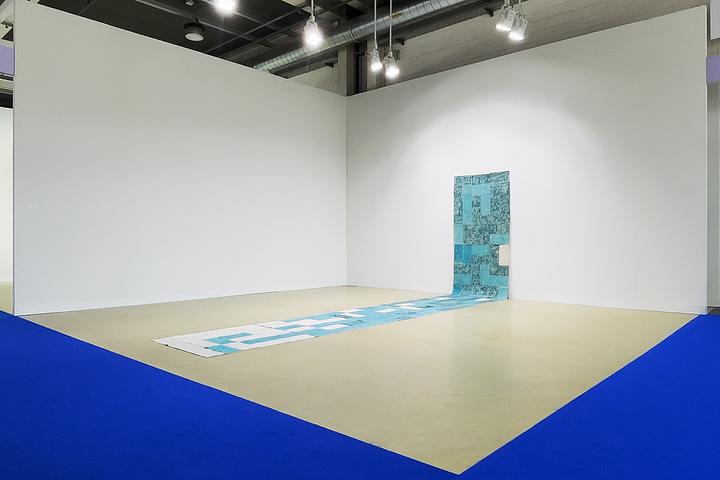
Kern Samuel
Between two (a)isles, 2024
Dyed and raw canvas patchwork
81 x 37 x 186 in (205.7 x 94 x 472.4 cm)
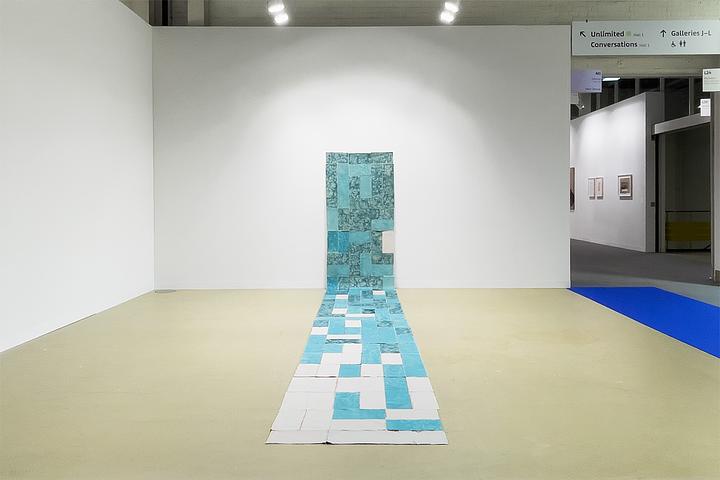
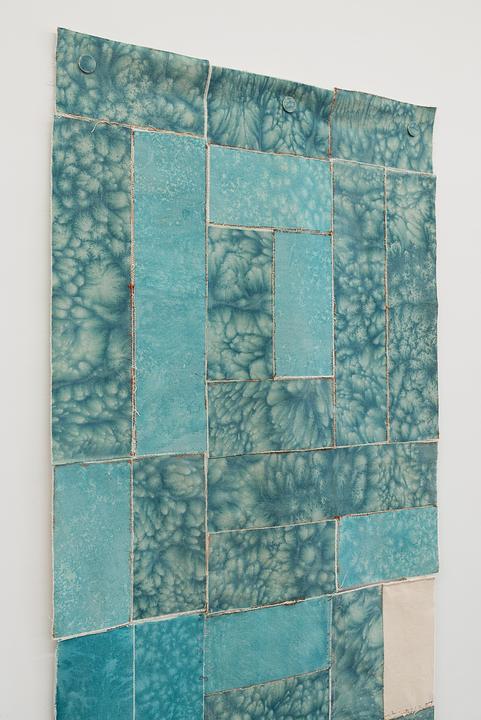

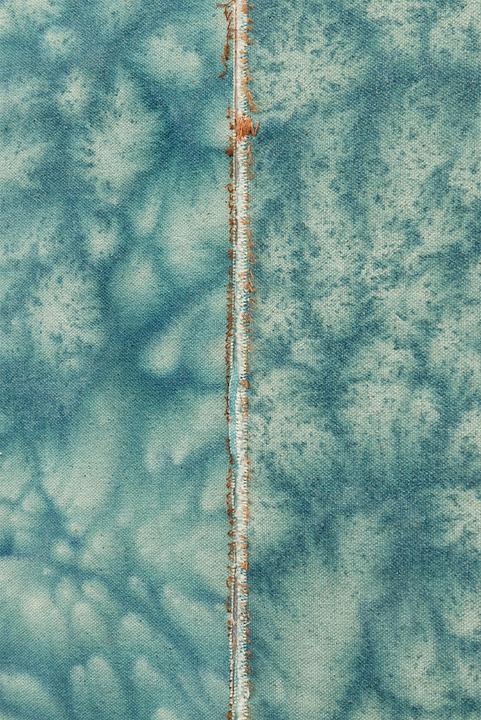
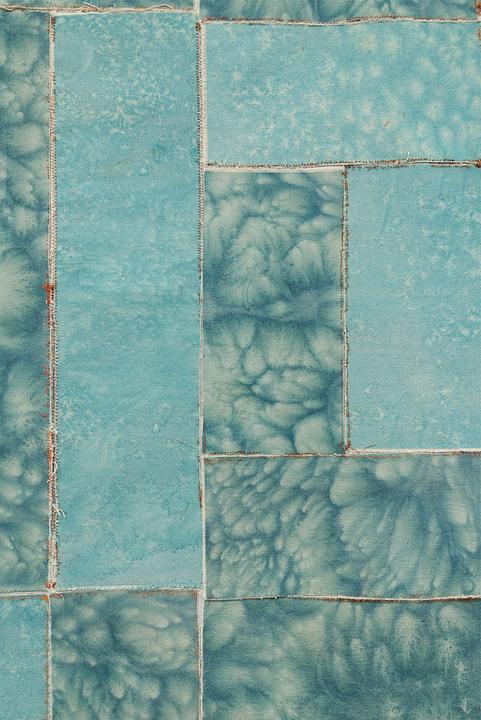
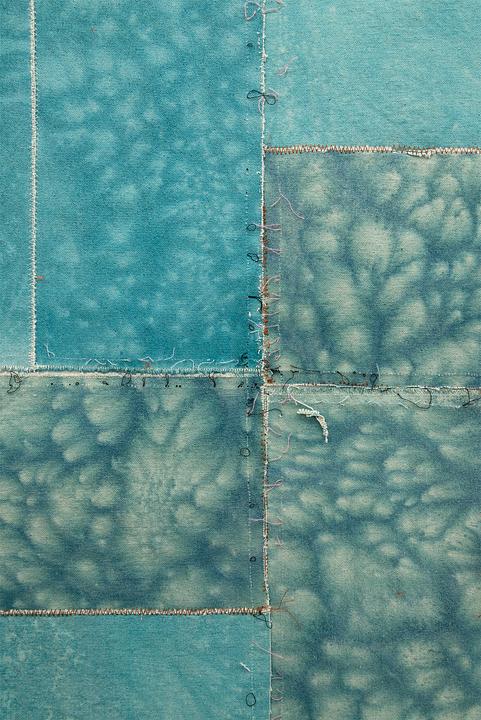
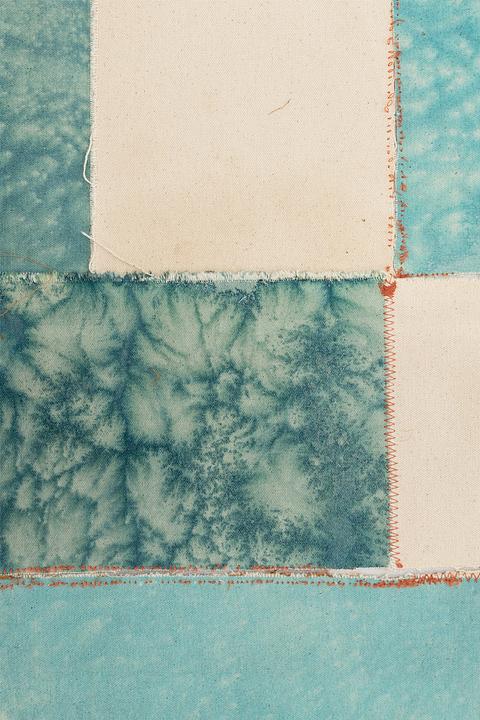
Derosia is pleased to present Kern Samuel at the 54th edition of Art Basel. The presentation consists of a single large work, Between two (a)isles, composed of 115 pieces of dyed and raw canvas. These pieces are tiled and fused to form one contiguous seven-meter by one-meter quilt with a subtle yet distinct color gradient from blues to white. The work is hung at a height of two meters in the center of the booth and extends down the wall and onto the floor, creating an aisle that bisects the booth.
Kern Samuel’s practice centers on painting as a modality to explore material, labor, and their implications. Tactile processes such as sewing, marking, dying, folding, and layering generate Samuel’s compositions, which often evoke infographic and diagrammatic modes of dissemination. As in much of Samuel’s work, this presentation draws heavily on the linguistic and cultural slippages that arise within language. The work’s title, Between two (a)isles, makes use of comparative homophones as a conceptual framework for the exhibition. The “aisle” here is structural, invoking notions of place, scale, and movement. Material qualities of the quilt’s surface and composition underscore transition, tactility, and rhythm. The other “isle” in the work’s title refers to a recurring metaphorical theme in Samuel’s practice, a reference to Trinidad and Tobago, where the artist was born and raised. For Samuel, island-ness is characterized by the fusion of cultural elements from various origins—colonial, European, African, Asian, Aboriginal, and more. This fusion results in a distinctive and complex cultural identity, further complicated by his experiences as an immigrant to the United States—an additional layer of cultural and aesthetic influence that shapes a perspective neither purely Western nor purely Caribbean. The pieces of fabric in Samuel’s work are sewn, then ripped apart and rejoined through an invisible fusing technique. The remnants of the torn stitches remain as visible evidence of the continuous reuse of materials and reworking of the composition. The logic of tiling to create an expansive unity and the creation of a fused patchwork quilt becomes a metaphor for an entity created from a multitude of sources.
Samuel’s work draws from Édouard Glissant’s use of the term “Creole” to describe the entanglement or “relation” between different cultures forced into cohabitation in the colonial context. Creolization here refers to the processes of “cultural and linguistic mixing” which arise from different cultures in the same indigenous space, primarily in the context of slavery, colonization, and the plantation societies of the Caribbean. In Glissant’s terms, slavery, the plantation, and the tensions and struggles associated with them were necessary conditions for the emergence of Creole. This process of “transculturation” produces a “third space”—a “native” or indigenous vernacular space, marked by the blending of elements from all originating cultures. In this configuration these elements are never equal, and can no longer be disaggregated or restored to their original forms. They no longer exist in a “pure” state but have been permanently “translated.”
It is this process of Creolization that defines the distinctiveness of Caribbean cultures: their “mixed” character, their creative vibrancy, their complex, troubled, unfinished relation to history and the prevalence in their narratives of themes such as voyaging, exile, and the unrequited trauma of expropriation and separation. For Samuel, the “isle” is representative of a translational logic marked by a focus on interpretation and misinterpretation as well as his use of metaphoric abstraction and conceptual rhyming. The nuance and elegance of Samuel’s work can be appreciated both in this singular monumental gesture as well as the acute attention to detail that is a hallmark of the artist’s practice.
Kern Samuel (b. 1990, Mount Hope, Trinidad and Tobago) lives and works in New Haven, CT. Recent institutional exhibitions include MoMA PS1, Queens, NY (2024); Bonner Kunstverein, Bonn, Germany (2022); The Africa Center, New York (2022, traveling exhibition); and White Columns, New York (2022). Other solo and group exhibitions include Croy Nielsen, Vienna, Austria (2024); Derosia, New York, NY (2023 & 2022); the bunker, Santa Monica Mountains, CA (2022); Bodega (Derosia), New York, NY (2021); Gallery Aferro, Newark, NJ (2019, 2018); Theresa A. Maloney Art Gallery, College of Saint Elizabeth, Morristown, NJ (2018); and Jeffrey Stark, New York, NY (2017).